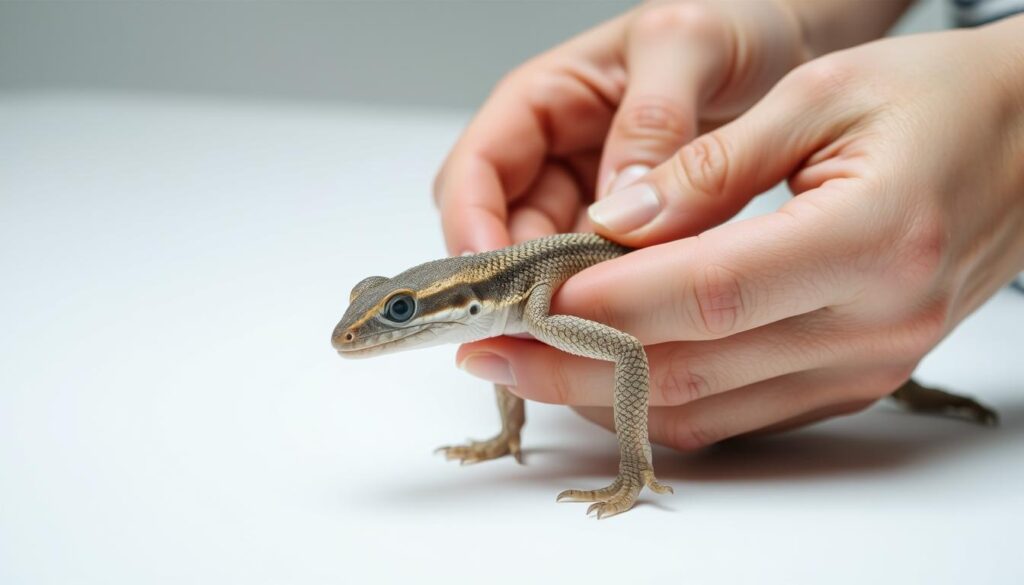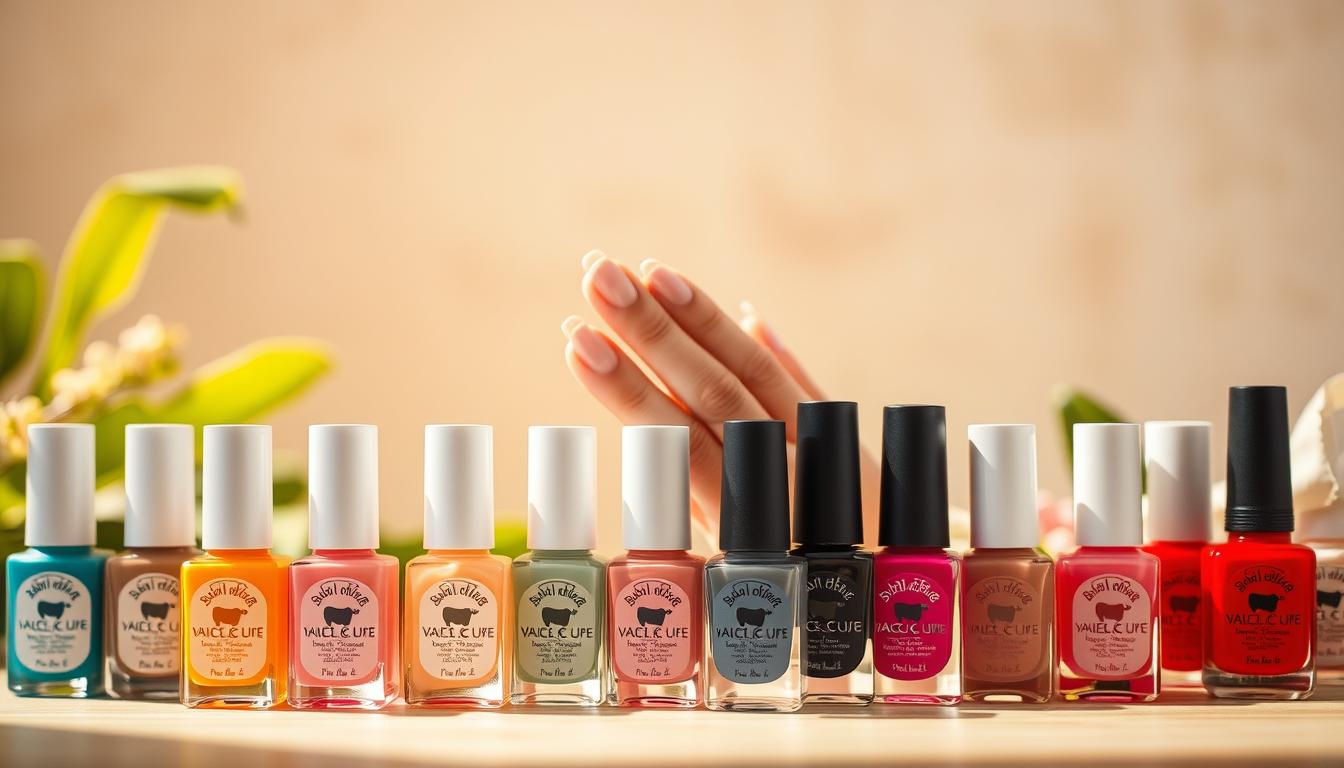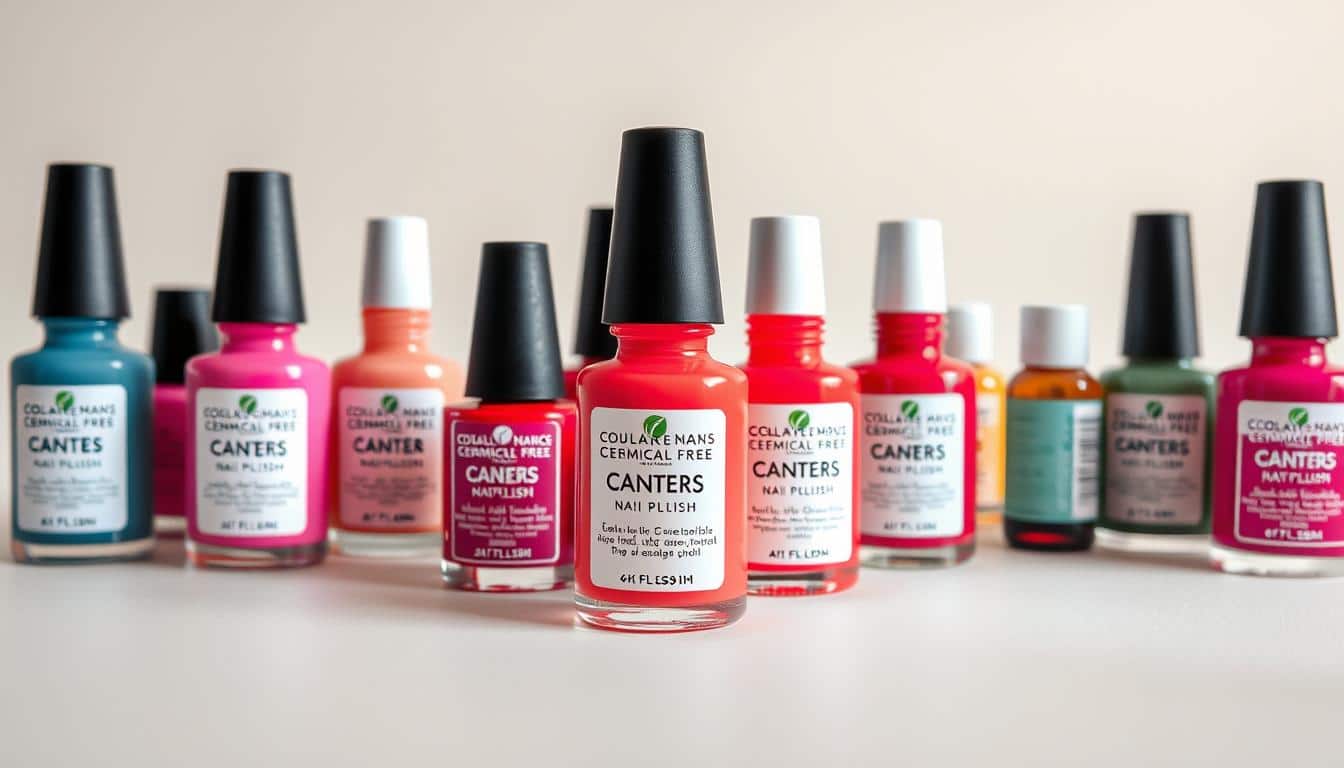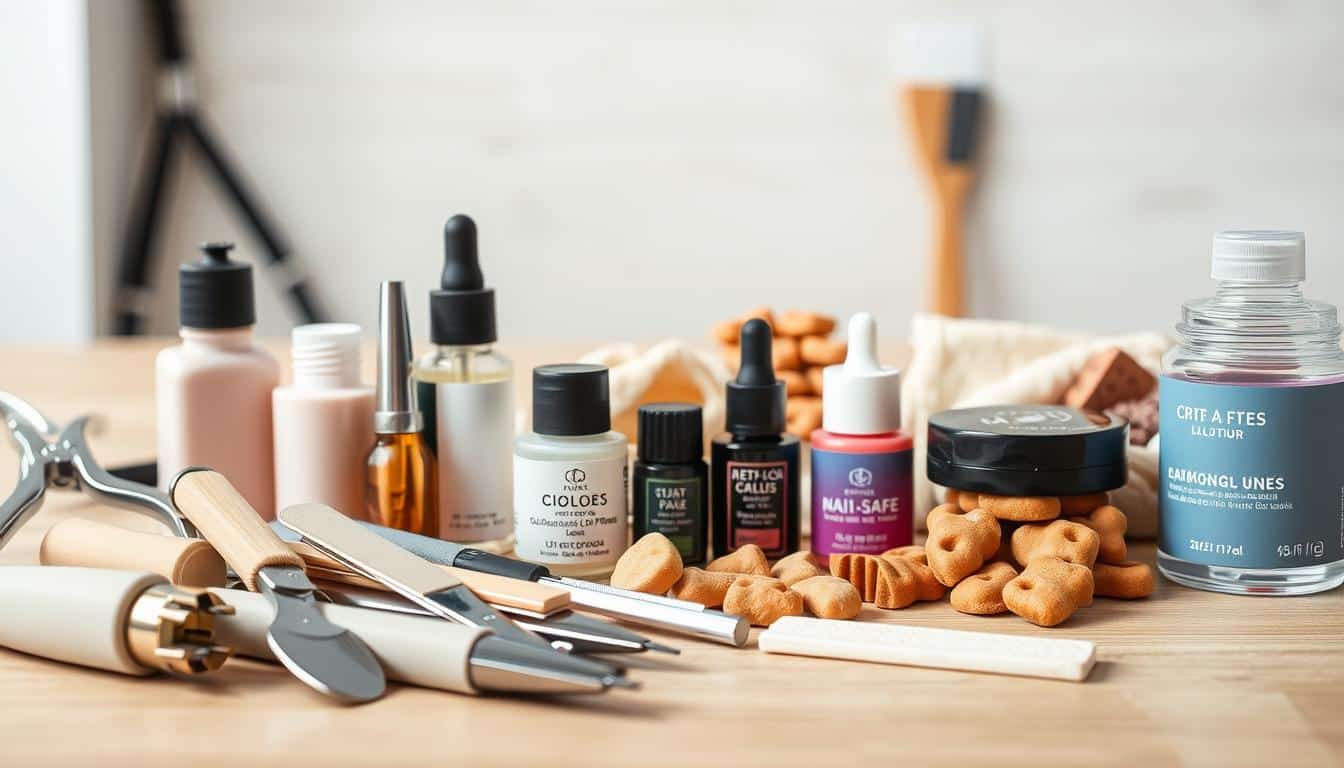Anúncios
Caring for reptiles safely starts by learning the right techniques. Many homes in the U.S. have reptiles as pets, making it vital to understand how to handle them properly. Knowing how to do this protects both you and your reptile.
This guide gives you important tips for handling reptiles safely. It helps grow your knowledge and confidence with these unique animals. By focusing on cleanliness, learning about your reptile’s behavior, and choosing the right pet, you will make a great home for them.
Introduction to Reptile Handling
Having a reptile as a pet is both unique and rewarding. Learning how to handle reptiles is key to their health and happiness. Good handling can make the bond between you and your reptile stronger. It helps build trust for fun times together.
Knowing how to handle reptiles right is very important. Different reptiles have their own needs and ways. When owners understand how their reptile acts naturally, they can be more confident. It’s vital to respect what the reptile likes to feel safe.
Handling reptiles is about more than just holding them. It plays a big part in making a strong friendship with your pet. Learning the best ways to interact with your reptile brings happiness to both of you.

Understanding Your Reptile’s Behavior
Understanding reptiles means knowing how they act and what their body language tells us. Each type of reptile shows different signs that help us know what they need or how they feel. It’s very important to watch these behaviors, especially to figure out how your pet feels in different situations.
Important behaviors to watch for include:
- Body Posture: They might stretch out or coil up. Stretching could mean they’re curious, while coiling might show fear or stress.
- Color Changes: Reptiles can change color based on their mood. Dark colors may show stress, and bright colors usually mean they’re relaxed.
- Tail Movements: Tail flicking can mean they’re upset, but a calm tail usually means they’re relaxed.
Being patient is key to getting your reptile’s body language right. Every pet is different, with their own way of reacting, based on their history and instincts. Some, like bearded dragons, might not mind being handled. But snakes might not like it as much. Getting to know your reptile’s personal behaviors helps create a happy life together.
Safe Reptile Handling Tips
Safe handling of reptiles starts with knowing what each type needs. It’s important to make sure they are comfy, as they do best when not stressed. By learning to see the little signs your reptile gives, you can make handling better for both of you.
Respecting Your Reptile’s Comfort
Different reptiles like different things that make them feel at ease. To start, make sure the area is calm. This includes:
- Providing a quiet space free from loud noises.
- Warming your hands beforehand to avoid shocking the reptile with cold temperatures.
- Gradually introducing your presence to reduce the likelihood of startling the reptile.
When you focus on these aspects, you create a safer setting. This leads to happier interactions with your reptile.
Recognizing Stress Indicators
It’s key to know when your reptile feels stressed. Signs of discomfort can be:
- Rapid movements or frantic attempts to escape.
- Hissing or vocalizing in ways not typical for the species.
- Freezing or becoming overly stiff when touched.
If your reptile seems uncomfortable, it’s probably best to put them back in their space. This helps keep them happy and secure.
Germs and Hygiene: The Importance of Washing Hands
Pet owners need to know how important reptile hygiene is. Reptiles and amphibians can carry harmful germs, like Salmonella. These germs can make people sick, so it’s key to keep things clean.
Understanding Salmonella and Other Risks
Handling reptiles can expose people to Salmonella risks. These germs can move from reptiles to humans easily. To lower this risk, it’s important to wash your hands after touching reptiles.
Keeping reptile homes clean is also crucial. You should clean their areas regularly and disinfect any place they touch. This is very important, especially if you have young kids or people with weaker immune systems at home.
Good reptile hygiene means washing hands carefully and keeping their areas clean. Doing this helps keep both the owners and their reptiles healthy.
Choosing the Right Reptile for Your Household
Finding the perfect reptile is key to happiness for both the pet and its owner. It’s important to think about various factors that affect the choice of a reptile. Knowing their behavior, how well they’re handled, and their care needs makes keeping a reptile better for you and them.
Captive-bred reptiles tend to be more relaxed than wild-caught ones. They’re especially good for first-time owners because they adjust well to living in a home. When caring for a reptile, think about the size of their home, how hot or cold it needs to be, and what they eat, as these needs differ greatly among species.
Before you decide to get a reptile, think about the time and resources you can give to their care. This will help you choose a reptile that matches your way of life and how much experience you have.
Handling Techniques for Different Reptile Species
Handling reptiles needs specific ways for each type. Knowing how to handle them well is key to a good bond and their comfort. Use gentle methods for reptiles that get stressed when touched. Here, we explore ways to handle reptiles with confidence, focusing on snakes.
Confident and Calm Handling
To handle reptiles well, try these steps:
- Let the reptile get used to you being around in its space.
- Move slowly to not scare it.
- Always use both hands to lift the reptile carefully.
- Keep your voice low and steady to help keep things calm.
Breaking the Hunt: Tips for Snakes
It’s important to stop a snake’s feeding thoughts when handling it. Use these tips:
- Wait a bit after feeding before handling the snake.
- Gently pet the snake to show it’s not feeding time.
- Make sure to support its body, not just the tail.
- Handle it often to teach that you’re not a threat.
Creating a Positive Environment for Handling
Creating a good environment for handling is key to keeping both reptile and owner happy. A peaceful area helps make reptiles comfortable, making the handling fun. Loud sounds and quick moves can upset them, so keep interactions quiet and slow.
Think about their living space to make handling easier. The cage should have plenty of places to hide and the right light and temperature. These things make reptiles feel safe and calm, which is good when you handle them.
Watch how your reptile acts at home before you try to handle it. Knowing how they feel helps build trust for better handling. Creating a nice environment for handling helps you and your reptile have a stronger bond and be happier.
Maximizing Trust Through Handling Sessions
Building trust with reptiles requires consistent efforts and understanding. Regular interaction helps reptiles get used to their owners. This leads to a bond that makes them feel comfortable and secure.
Handling sessions should be approached with patience. It’s important that the reptile feels safe and cared for during these times.
Supporting the Body of Your Reptile
Supporting a reptile’s body correctly is key in positive handling. You must hold them in a way that is good for their body and keeps them stable. Here are some important techniques for proper support:
- Use both hands to cradle the reptile, ensuring the body is well-supported.
- Avoid gripping too tightly; gentle pressure is enough to keep them secure.
- Pay attention to their movements, adjusting your grip to keep them comfortable.
- Let the reptile explore your hands, which helps them feel free.
Using these strategies during handling sessions improves the experience for your reptiles. This also helps build trust, as they learn that human interaction means comfort and safety.
Protecting Children and Reptiles During Interaction
Making sure kids are safe around reptiles also means helping them have good times with these animals. Adults must watch over all interactions closely. Here’s how to keep everyone safe:
- Teach children to approach reptiles calmly and gently, avoiding sudden movements that may startle the animal.
- Encourage children to understand basic reptile behavior, helping them identify when a reptile may be stressed or uncomfortable.
- Set clear boundaries regarding how and when to handle reptiles, emphasizing the importance of respecting the animal’s space.
- Use safe handling techniques, guiding children to support the reptile’s body properly to avoid injury.
Adults have a big job in making sure both children and reptiles are safe. By teaching kids about reptiles and how to act around them, families can have fun with their reptilian friends without any worries.
Feeding Your Reptile: Best Practices Before Handling
Feeding your reptile right is key for its health and well-being. You need to follow good feeding rules to help your pet feel safe. Before holding your reptile after it eats, wait a bit. This helps avoid any upset or them throwing up their meal. They need time to properly digest their food.
Keep these tips in mind when feeding your reptile:
- Allow a minimum waiting time of 24 hours after feeding before picking up your reptile.
- Provide a balanced diet according to your reptile’s species-specific needs.
- Monitor portion sizes to avoid overfeeding and ensure your pet receives the right amount of nutrients.
- Establish a feeding schedule that aligns with your reptile’s natural habits.
By following these tips, you’ll help your reptile digest better and reduce stress when handling. Understanding how feeding affects handling is key. It makes your pet more comfortable and happy.
When to Seek Veterinary Help
It’s important to know when your reptile is sick to keep them healthy. Many reptile owners don’t know when to seek vet care. Look out for signs like being more tired than usual, not eating, shedding differently, or acting strange.
Seeing any of these signs of reptile illness means you should act fast. Don’t ignore things like eye goo or trouble moving. These could be news of big health problems that need a vet’s help.
Not all vets know about reptiles, so find one that does. A vet who knows about exotic pets can give the best care. Going to the vet often can catch health issues early and help keep your reptile well.
You should see a vet if symptoms are bad or don’t get better. Don’t wait too long to get help. Getting care quickly can make a big difference and help your reptile stay healthy.
Conclusion
Safe reptile handling is key to being a good pet owner. Learning from this article helps you bond with your reptile pets while keeping them safe. It’s important to know how your pet acts and the right way to handle them.
When you focus on safe handling and staying clean, your reptiles will be healthier and happier. This mix of knowing, patience, and respect improves your relationship with your pet. It also helps the reptile community grow strong.
Adding these steps to your daily life shows you’re more than just a pet owner; you’re a responsible reptile caregiver. Commit to taking care of your reptile pet. Enjoy the special moments it brings to you and your scaled buddy.



